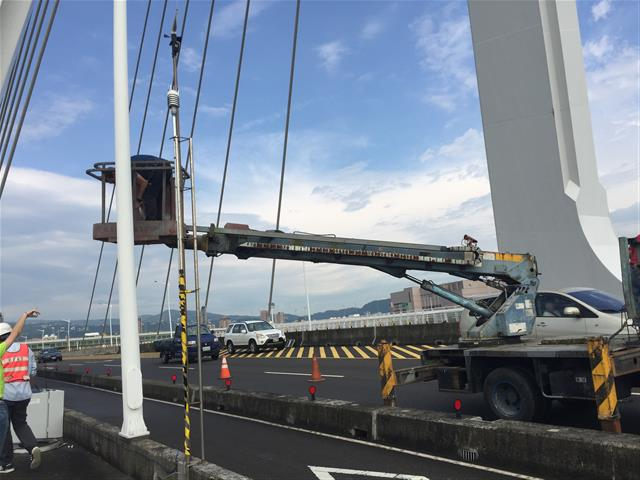Shezi Bridge: High-tech Safety Monitoring via Taiwan-France Collaboration
 With environmental changes and frequent extreme weather in recent years, the infrastructure of cities is being harshly tested, and whether the structures will remain sturdy after a flood, typhoon or earthquake has become a public concern. Consequently, in the vigorous process of smart city promotion, Taipei City has collaborated with French startup Morphosense – the winner of European Union project Horizon 2020 (H2020) – to introduce the monitoring technology that is used on the Eiffel Tower to Shezi Bridge. Since June, the Shezi Bridge Structural Monitoring System Experimental Project has deployed the structural monitoring system to collect data remotely for advance warning and reporting purposes.
With environmental changes and frequent extreme weather in recent years, the infrastructure of cities is being harshly tested, and whether the structures will remain sturdy after a flood, typhoon or earthquake has become a public concern. Consequently, in the vigorous process of smart city promotion, Taipei City has collaborated with French startup Morphosense – the winner of European Union project Horizon 2020 (H2020) – to introduce the monitoring technology that is used on the Eiffel Tower to Shezi Bridge. Since June, the Shezi Bridge Structural Monitoring System Experimental Project has deployed the structural monitoring system to collect data remotely for advance warning and reporting purposes.
According to research conducted by the World Bank and multinational insurance organizations, Taiwan’s land and population are the most vulnerable to natural disasters in the world; and the economic loss generated from accidents and natural disasters in Taipei City is also ranked no. 1 globally. Shezi Bridge adopts the complex cable-stayed design, therefore its stress and structural soundness must be monitored closely.
According to the Department of Information Technology (DOIT) Commissioner Lu Hsin-ke, the Shezi Bridge Structural Monitoring System Experimental Project involves collaboration between the agency and the New Construction Office (NCO), where Taiwan-France cooperation has facilitated the international exchange of technologies that are in turn utilized by applications such as IoT and AI.
In addition, DOIT will continue to make available more experimental venues in the future and test smart technologies in real-life scenarios. By merging the resources of the government and all participating partners, more information communication industry smart applications will be developed in a bid to transform Taipei into a livable, sustainable and resilient city.
The NCO pointed out that the project involves the installation of structural monitoring sensors to measure the bridge’s 3D deformation and 3-axis vibrations. The collected data will be provided to a professional consultant firm for analysis. Furthermore, image recognition and traffic flow data are combined with algorithms to monitor the bridge’s structure, in turn achieving smart disaster prevention and monitoring, smart security, and protection of public safety.
Moreover, the CTO of Morphosense Mikael Carmona commented that the company has worked hand in hand with Taipei City Government and CECI Engineering Consultants through the Taipei Smart City Project Management Office to implement the first experimental project on bridge structural monitoring in Asia. The project has received subsidies from European Union project Horizon 2020 (H2020), utilizing innovative technologies such as IoT to accurately monitor public infrastructure in an effort to improve the safety of buildings and bridges for the public. At the same time, the company has obtained valuable experience and confidence, proving to be beneficial for its developments in the international market.
Horizon 2020 (H2020) is the largest R&D innovation project launched by the European Union since its inception. Since 2014, it has subsidized over NT$1 trillion to EU nations to conduct innovative technology R&D and commercialization. The Shezi Bridge pilot program is expected to end on October 31, 2019, bringing collaborative opportunities between France and Taiwan that allow Taiwan, a non-EU country, to gain indirect access to international cutting-edge technology.

![Taiwan.gov.tw [ open a new window]](/images/egov.png)
